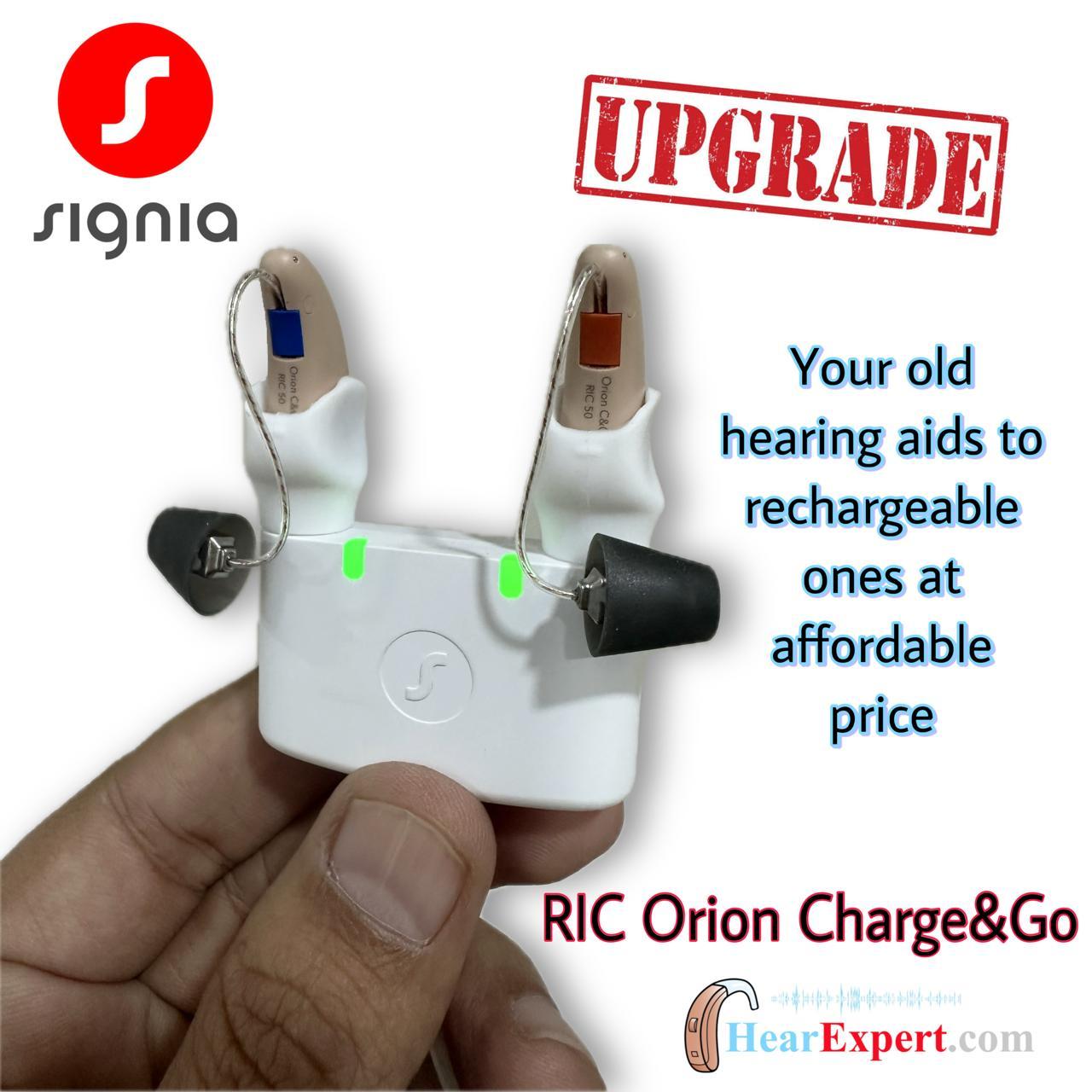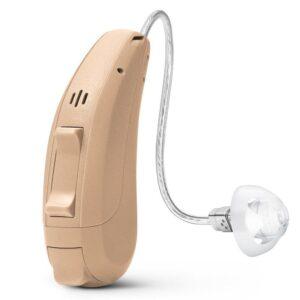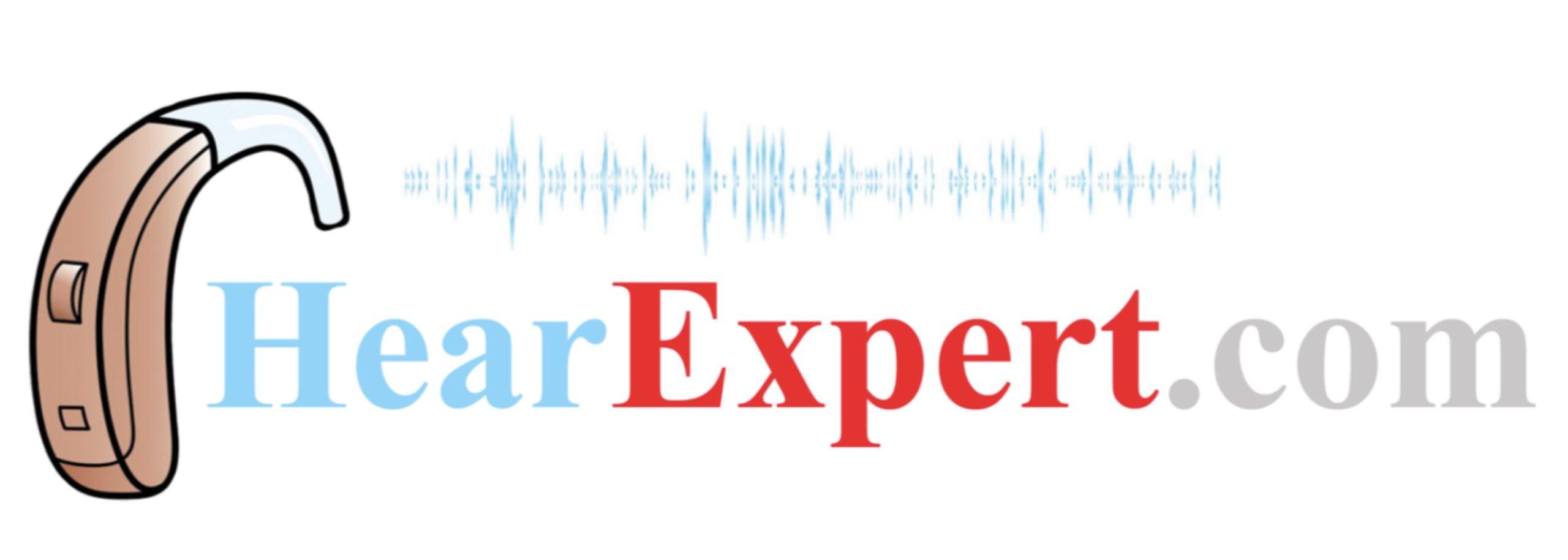Receiver-In-Canal (RIC) hearing aids have emerged as one of the most versatile and popular hearing solutions available today. Their unique design—featuring a small housing behind the ear connected by a thin wire to a receiver placed directly in the ear canal—offers remarkable flexibility for addressing various types and degrees of hearing loss. Whether you’re experiencing mild difficulty understanding conversation in noisy environments or contending with more significant hearing challenges, RIC technology might provide the solution you’ve been seeking. The specialists at Hear Expert have compiled this comprehensive guide to help you understand how RIC hearing aids can be tailored to address different levels of hearing impairment.

Understanding Hearing Loss Classification
Before exploring how RIC hearing aids address various hearing needs, it’s important to understand how hearing loss is classified. Audiologists typically categorize hearing loss into these ranges:
- Mild hearing loss: 26-40 decibels (dB) – Difficulty hearing soft sounds and understanding speech in noisy environments
- Moderate hearing loss: 41-55 dB – Trouble following conversations without amplification
- Moderately severe hearing loss: 56-70 dB – Conversation becomes challenging without significant amplification
- Severe hearing loss: 71-90 dB – Cannot hear speech without powerful amplification
- Profound hearing loss: 91+ dB – Unable to hear most sounds without extremely powerful technology
The Unique Advantage of RIC Technology
What makes RIC hearing aids exceptionally suitable for various degrees of hearing loss is their modular design. Unlike other hearing aid styles where the entire device must be replaced to accommodate changing hearing needs, RIC devices can be adapted by simply changing the receiver component. This offers several key advantages:
- Scalable power options: Receivers come in different power levels (low, medium, high, ultra-high) to address varying degrees of hearing loss
- Cost-effective adaptability: When hearing changes, often only the receiver needs replacement rather than the entire device
- Customizable fit: Various dome sizes and styles can be paired with different receivers to optimize comfort and acoustic performance
- Reduced feedback risk: The separation of microphone and receiver minimizes feedback issues common in other powerful hearing aids
- Extended bandwidth: Many RIC models offer amplification up to 10 kHz, capturing important high-frequency sounds essential for speech clarity
This adaptability makes RIC technology a long-term solution that can evolve with changing hearing needs, often eliminating the need for complete device replacement as hearing fluctuates over time.
RIC Solutions for Mild Hearing Loss
Individuals with mild hearing loss primarily struggle in challenging listening environments like restaurants or group gatherings. For these users, RIC hearing aids offer:
- Open fit options: Low-power receivers paired with open domes allow natural sound to enter the ear while selectively amplifying only the frequencies where hearing assistance is needed
- Preservation of natural sound quality: Minimal occlusion effect (the sensation of speaking in a barrel) due to the open fit design
- Discrete appearance: Thin, nearly invisible wires and small behind-the-ear components provide cosmetic appeal
- Situational enhancement features: Directional microphones and noise reduction algorithms help isolate conversation in noisy settings
- Mild gain requirements: Low-power receivers provide just enough amplification without overwhelming the auditory system

Addressing Moderate Hearing Loss with RIC Technology
- Medium-power receivers: Providing additional gain while maintaining a relatively small profile
- Varied dome options: Semi-open or closed domes that balance comfort with the need for increased amplification
- Enhanced noise management: More sophisticated signal processing to improve speech understanding in challenging environments
- Multiple program options: Settings optimized for different listening scenarios like quiet conversations, noisy restaurants, or outdoor spaces
- Feedback cancellation systems: Advanced algorithms that prevent whistling even with increased amplification levels
Users with moderate hearing loss often find RIC devices strike an ideal balance between providing necessary amplification and maintaining comfort for all-day wear. The ability to easily adjust settings for different environments helps address the variability in communication challenges these individuals face throughout their day.
RIC Solutions for Moderately Severe to Severe Hearing Loss
- Power receivers: Delivering substantial amplification while maintaining the comfortable RIC form factor
- Custom earmolds option: For maximum retention and optimal acoustic properties when higher power is needed
- Advanced compression systems: Sophisticated processing that makes soft sounds audible while keeping loud sounds comfortable
- Enhanced low-frequency amplification: Important for the perception of vowel sounds and overall speech understanding
- Binaural coordination: Synchronization between devices for consistent sound quality and easier listening
For many users with more severe hearing loss who previously relied on larger, more visible hearing aids, modern RIC technology offers comparable performance with significantly improved aesthetics and comfort. The reduced size doesn’t come at the expense of necessary amplification or feature availability.
When Custom RIC Solutions Become Essential
- Custom molded earpieces: Precisely fitted to the individual’s ear canal for optimal comfort and acoustic performance
- Specialized venting configurations: Tailored to balance low-frequency response with comfort
- Reinforced tubing options: Sturdier connections for active users or those who require maximum durability
- Specialized programming: Frequency compression or transposition to make high-frequency sounds more accessible
- Bimodal compatibility: For users with single-sided deafness or asymmetric hearing loss who might use a cochlear implant in one ear
The Role of Wireless Connectivity Across Hearing Loss Levels
Regardless of hearing loss severity, modern RIC hearing aids offer connectivity features that enhance everyday use:
- Direct smartphone streaming: Phone calls, music, and navigation instructions delivered directly to hearing aids
- Television connectivity: Clear audio from entertainment systems without disturbing others
- Remote microphone compatibility: Additional microphones that can be placed near a speaker in challenging environments
- Smartphone app controls: Discreet adjustments without drawing attention to the hearing aids
Assessing Candidacy for RIC Technology
While RIC hearing aids are remarkably versatile, they may not be ideal for everyone. Factors that might influence suitability include:
- Ear canal anatomy: Very narrow or sharply bent canals may present fitting challenges
- Manual dexterity: Users must be able to manage the small components and battery changes
- Degree of hearing loss: Those with profound hearing loss might benefit more from other technologies
- Lifestyle factors: Extremely dusty or wet environments might require more robust waterproof options
- Previous hearing aid experience: Adaptation from other styles requires consideration
A comprehensive evaluation by a Hear Expert audiologist will determine whether RIC technology aligns with your specific hearing profile, anatomical considerations, and lifestyle needs.

The process of fitting RIC hearing aids varies somewhat depending on hearing loss severity:
- For mild loss: Focus on maintaining natural sound quality while providing subtle enhancement
- For moderate loss: Balancing sufficient gain with comfort, often implementing gradual acclimatization
- For severe loss: Careful receiver selection and potentially custom earmolds, with more extensive verification measures
- For all users: Real-ear measurement to verify appropriate amplification across frequencies
This tailored approach ensures that each user receives the optimal configuration for their specific hearing profile, maximizing benefit regardless of where they fall on the hearing loss spectrum.
Also read From Fitting to Fine-Tuning: Getting the Most from Your RIC Hearing Aids
Conclusion
By understanding how RIC technology can be customized to address different degrees of hearing loss, you can make an informed decision about whether this popular hearing aid style might be the right choice for your hearing journey. The flexibility, performance, and cosmetic appeal of RIC devices have made them the preferred option for millions of hearing aid users worldwide—many of whom discover that the right configuration can transform their daily communication experiences regardless of their hearing loss severity. For residents in rural and surrounding districts, services offering Hearing Aids In Balod provide access to these customizable RIC solutions, ensuring that even those in smaller communities can benefit from advanced hearing technology tailored to their specific needs.
